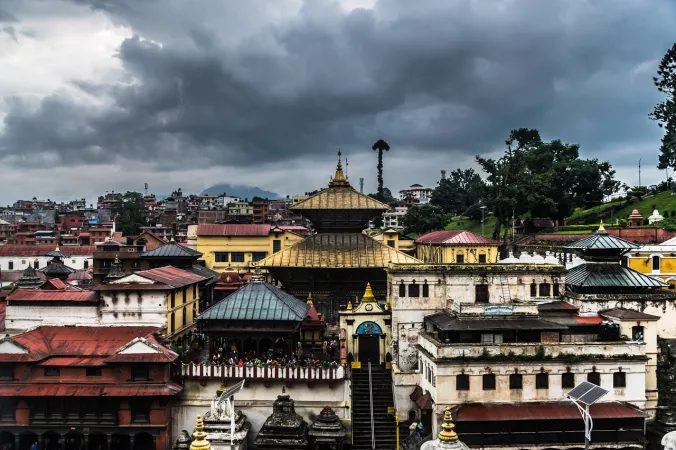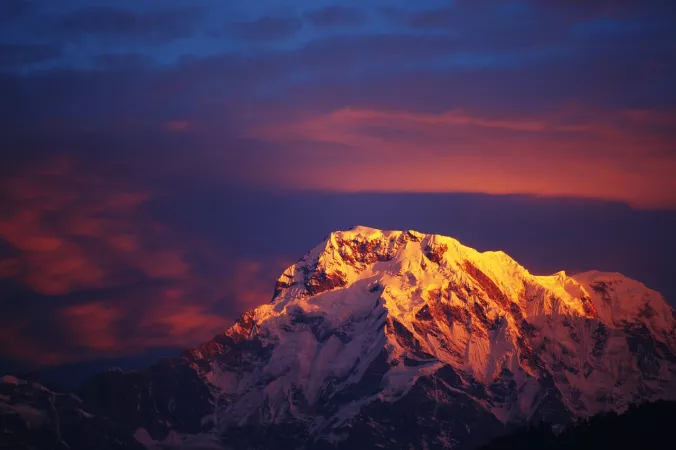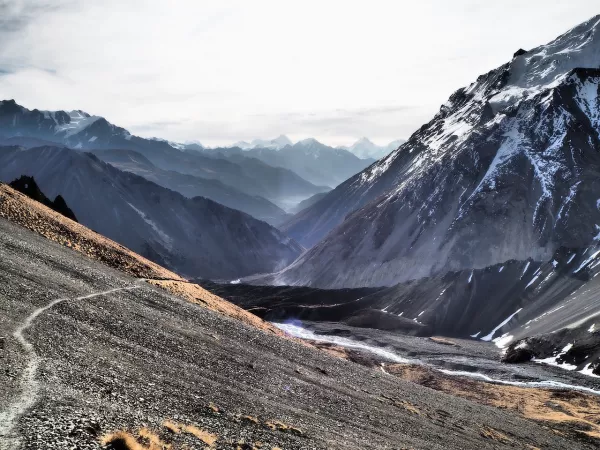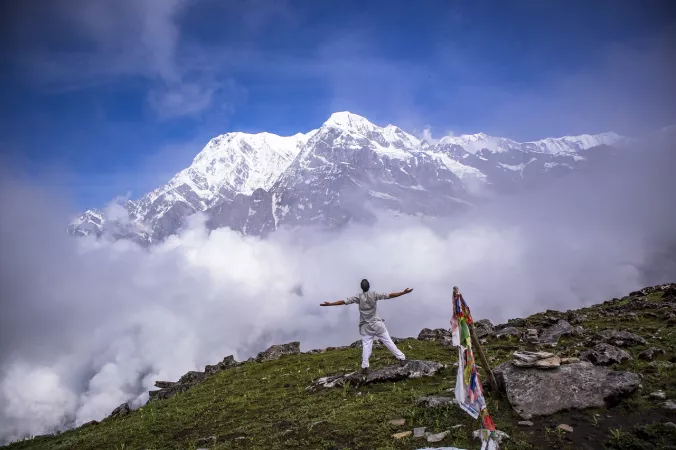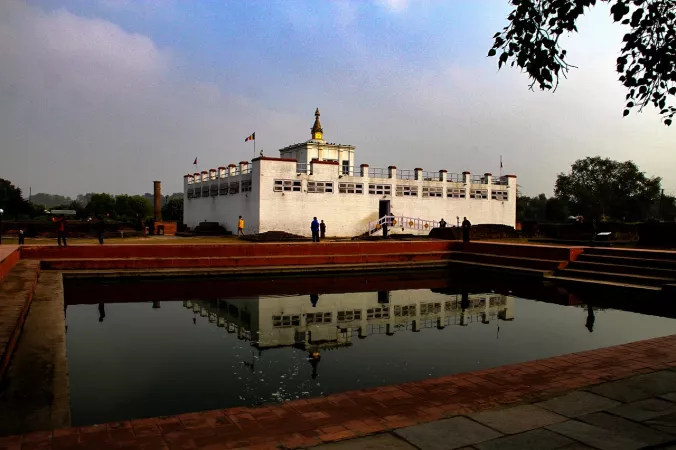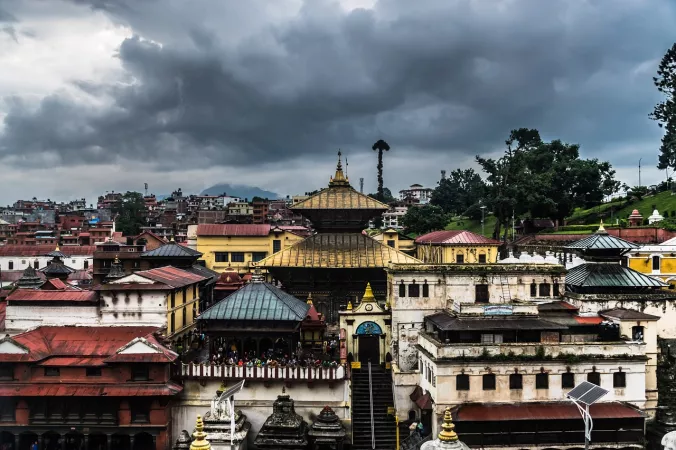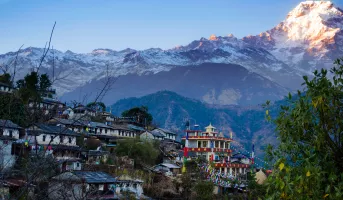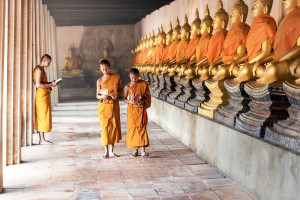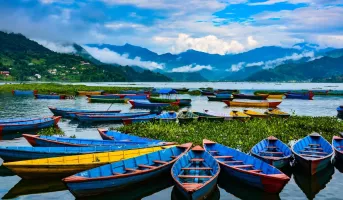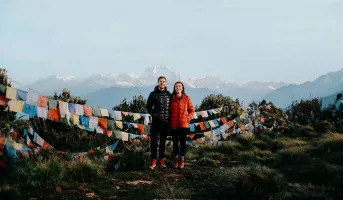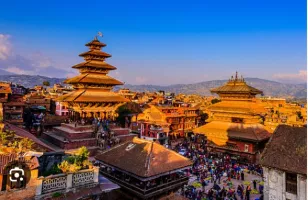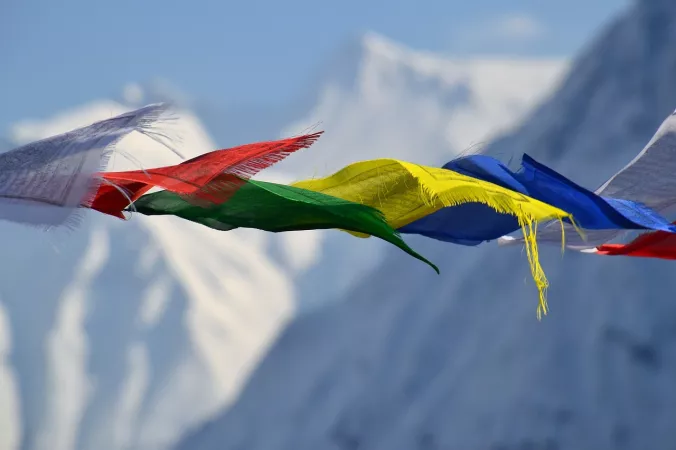
Nepal
Duration
7 to 14 Days
7 to 14 Days
Best time to visit
Oct-Nov
Oct-Nov
Theme
Hill Station, Adventure, Religious, Heritage
Hill Station, Adventure, Religious, Heritage
Nepal Travel Guide
Nepal, a landlocked country in South Asia, is renowned for its stunning Himalayan landscapes, including Mount Everest, the highest peak in the world. With a rich cultural heritage, Nepal is a melting pot of Hindu and Buddhist traditions. The country's history is steeped in ancient kingdoms and dynasties, making it a fascinating destination for history buffs. Nepal is also famous for its diverse geography, ranging from lush forests to snow-capped mountains, offering a plethora of outdoor activities for adventure enthusiasts.Top Attractions in Nepal
- Mount Everest
- Pashupatinath Temple
- Boudhanath Stupa
- Chitwan National Park
- Phewa Lake
Nepal is Famous for
Adventure tourism, including trekking and mountaineering.Top Attractions in Nepal
- Trekking in the Himalayas
- Exploring Kathmandu's Durbar Square
- Wildlife spotting in national parks
- Paragliding in Pokhara
What's Great about Travelling to Nepal?
- Unmatched trekking opportunities in the Himalayas
- Rich cultural experiences in ancient cities
- Breathtaking views of the Himalayan peaks
What's Not So Great about Travelling to Nepal?
- Challenges with infrastructure and transportation
- High-altitude sickness risks in mountainous regions
- Monsoon season affecting travel plans
Travel Tips for Nepal
- Obtain necessary permits for trekking in restricted areas
- Respect local customs and traditions
- Stay hydrated and acclimatize properly in high-altitude areas
Important Nepal trip information
- Ideal Duration: 10-14 days
- Best Time to Visit: October to November
- Nearby Airports and Railway Stations: Tribhuvan International Airport (Kathmandu), no railway network
Top 8 Places to visit in Nepal
Per Person
21,950
*EXCLUDING APPLICABLE TAXES 4.9 Ratings
( 185 Reviews )
( 185 Reviews )
Per Person
20,000
*EXCLUDING APPLICABLE TAXES 4.3 Ratings
( 218 Reviews )
( 218 Reviews )
Per Person
21,960
*EXCLUDING APPLICABLE TAXES 4.9 Ratings
( 185 Reviews )
( 185 Reviews )
Per Person
31,450
*EXCLUDING APPLICABLE TAXES 4.9 Ratings
( 185 Reviews )
( 185 Reviews )
Per Person
15,500
*EXCLUDING APPLICABLE TAXES 5.0 Ratings
( 8 Reviews )
( 8 Reviews )
Per Person
14,000
*EXCLUDING APPLICABLE TAXES 5.0 Ratings
( 8 Reviews )
( 8 Reviews )
FAQ's on Nepal
Q1: What is the best time to visit Nepal?
The best time to visit Nepal is during the autumn months of September to November when the weather is clear, and the skies are bright, offering stunning views of the Himalayas. Spring, from March to May, is also a popular time with blooming flowers and moderate temperatures ideal for trekking. Monsoon season from June to August brings heavy rains and may not be the best time for outdoor activities.
Q2: Do I need a visa to travel to Nepal?
Yes, most visitors require a visa to enter Nepal. Tourist visas can be obtained upon arrival at the airport or border entry points. However, it is advisable to check the visa requirements based on your nationality as some countries may have specific regulations. Visa extensions are possible for those looking to stay longer than the initial visa duration.
Q3: What are the must-visit attractions in Nepal?
Nepal is famous for its diverse attractions, including the majestic Himalayas, Mount Everest, the vibrant city of Kathmandu with its temples and palaces, the serene lakes of Pokhara, and the ancient city of Bhaktapur. Popular activities include trekking in the Annapurna or Everest region, exploring Chitwan National Park for wildlife spotting, and experiencing the rich culture and traditions of the Nepalese people.
Q4: Is Nepal a safe place to travel?
Nepal is generally a safe country for travelers, with friendly locals and a welcoming atmosphere. However, like any destination, it is important to take precautions against petty theft and be mindful of your belongings, especially in crowded tourist areas. It is recommended to avoid political demonstrations and to be cautious while trekking in remote areas.
Q5: What is the local currency in Nepal and can I use credit cards?
The local currency in Nepal is the Nepalese Rupee (NPR). While credit cards are accepted in larger establishments such as hotels and restaurants in major cities, it is advisable to carry cash for smaller purchases and in rural areas. ATMs are widely available in urban centers for convenient access to money.
Q6: What is the local cuisine like in Nepal?
Nepalese cuisine is diverse and flavorful, with influences from Indian and Tibetan cooking. Popular dishes include momo (dumplings), dal bhat (rice and lentils), and Newari cuisine like bara (fried lentil patties) and chatamari (Nepalese pizza). Vegetarian options are widely available, and food is often spiced with traditional herbs and spices. Travelers with dietary restrictions can find options to suit their needs in most restaurants.
Q7: What transportation options are available in Nepal?
Transportation in Nepal varies from buses, taxis, and rickshaws in cities to domestic flights and tourist buses for longer distances. For trekking enthusiasts, there are options for hiring guides and porters, as well as trekking agencies that arrange treks in the Himalayas. Roads in rural areas can be challenging, so it is advisable to plan your routes and modes of transport in advance.
Q8: Are there any cultural norms or etiquette I should be aware of when visiting Nepal?
When visiting Nepal, it is important to respect local customs and traditions. Removing shoes before entering temples and homes, using your right hand for giving and receiving, and dressing modestly, especially when visiting religious sites, are common practices. Greeting people with "Namaste" and showing humility and respect towards elders are appreciated. It is also customary to ask for permission before taking photographs of individuals or religious sites.
Q9: I am a travel agent. How can I buy travel leads of Nepal?
Register yourself as a travel agent at agents.tripclap.com and then you can buy travel leads to Nepal once your account is approved. For more details contact our support team at +91-8069186564 or support@tripclap.com
